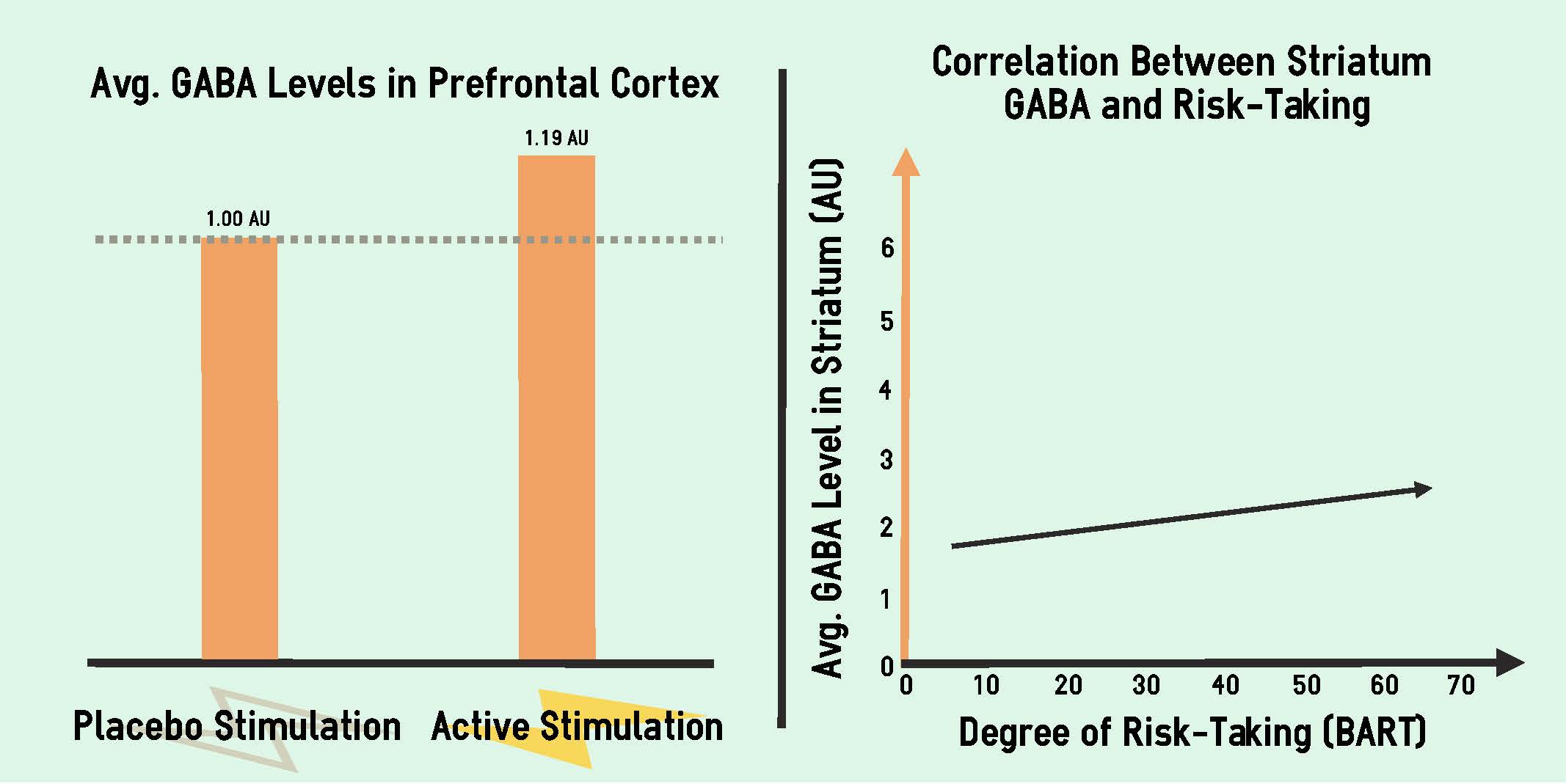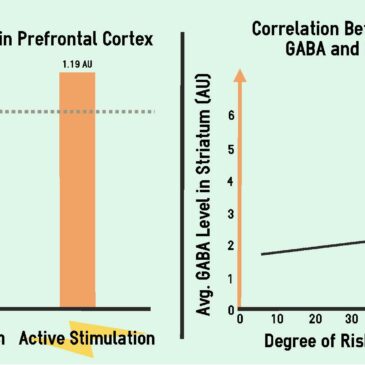For patients with Gambling Disorder, approved medication is nonexistent. However, one promising treatment option for Gambling Disorder is transcranial direct current stimulation (tDCS). This non-invasive procedure involves delivering a low-intensity current through electrodes placed on the scalp to stimulate specific brain regions and modulate neurotransmitter levels. Research has shown that tDCS reduces cravings in patients with substance use disorders. This week, The WAGER reviews a study by Maya Dickler and her colleagues examining whether tDCS achieves the same effect in a previously untested population, Gambling Disorder patients.
What was the research question?
What are the effects of tDCS on neurotransmitters in patients with Gambling Disorder?
What did the researchers do?
The researchers used convenience sampling to recruit 16 patients being treated for Gambling Disorder at a rehabilitation center in Quebec, Canada. Patients attended two sessions spaced one week apart during which they underwent 30 minutes of either active stimulation or placebo stimulation1 to the prefrontal cortex2. Neurotransmitter levels in the right prefrontal cortex were measured during both 30-minute sessions using neuroimaging techniques, and compared using paired t-tests. Before tDCS was administered, participants self-reported on their feelings of impulsivity and craving, and completed a risk taking task. Pearson correlation tests were used to compare these behavioral scores with neurotransmitter levels.
What did they find?
Direct current stimulation significantly raised levels of the neurotransmitter gamma-aminobutyric acid (GABA) in the right prefrontal cortex compared to placebo stimulation. This is important because GABA is a major inhibitory neurotransmitter, acting like the brakes in a car. The researchers found a strong positive correlation between baseline risk taking, impulsivity, and craving and GABA level increase in the striatum, a brain structure highly connected to the prefrontal cortex. In other words, Gambling Disorder patients who were high in risk taking, impulsivity, and craving had higher concentrations of GABA in the striatum during tDCS. They might be especially likely to respond to the treatment designed to raise GABA levels.
 Figure. Left: Mean prefrontal GABA levels of all participants measured during both active tDCS and placebo tDCS. Right: Line of best fit depicting the positive correlation between striatal GABA levels across all sessions and risk taking behavior assessed by the Balloon Analogue Risk Task (BART) across all sessions; AU: arbitrary unit. Click image to enlarge.
Figure. Left: Mean prefrontal GABA levels of all participants measured during both active tDCS and placebo tDCS. Right: Line of best fit depicting the positive correlation between striatal GABA levels across all sessions and risk taking behavior assessed by the Balloon Analogue Risk Task (BART) across all sessions; AU: arbitrary unit. Click image to enlarge.
Why do these findings matter?
The use of transcranial direct current stimulation to increase prefrontal GABA levels is a promising approach to treatment of Gambling Disorder, as past research has shown that medication to increase GABA concentration in the brain effectively reduces feelings of craving in addiction-related disorders, including Gambling Disorder. Future research should investigate whether this treatment translates into better control of one’s gambling behavior in order to provide further support for the use of tDCS targeting the GABAergic system in Gambling Disorder treatments.
Every study has limitations. What are the limitations in this study?
The researchers did not measure neurotransmitter levels in the left prefrontal cortex due to time constraint. Also, the researchers used convenience sampling and excluded patients with a history of substance use disorders within the previous year. This sample may not accurately represent the entire Gambling Disorder population, especially since substance use disorders are often comorbid with Gambling Disorder.
For more information:
Are you worried you or a loved one has a gambling problem? Visit the National Council on Problem Gambling for screening tools and resources.
For additional resources, including gambling and self-help tools, visit The BASIS addiction resources page.
— James Juviler
What do you think? Please use the comment link below to provide feedback on this article.
________________
1 In the placebo condition, current was applied only during the first and last 30 seconds of the session.
2 Session order was randomized, and all sessions were double-blind.





Ahmet Zihni Soyata November 8, 2018
We further clarified and extended the results of tDCS in gambling disorder:
https://woodslab.phhp.ufl.edu/2018/09/26/dr-woods-publishes-first-comprehensive-textbook-on-tdcs/
https://link.springer.com/article/10.1007%2Fs00406-018-0948-5
Stanley Bier, PhD November 21, 2018
Small sample. Interesting results. Difficult to translate into private practice therapy.
More information is needed but interesting results.